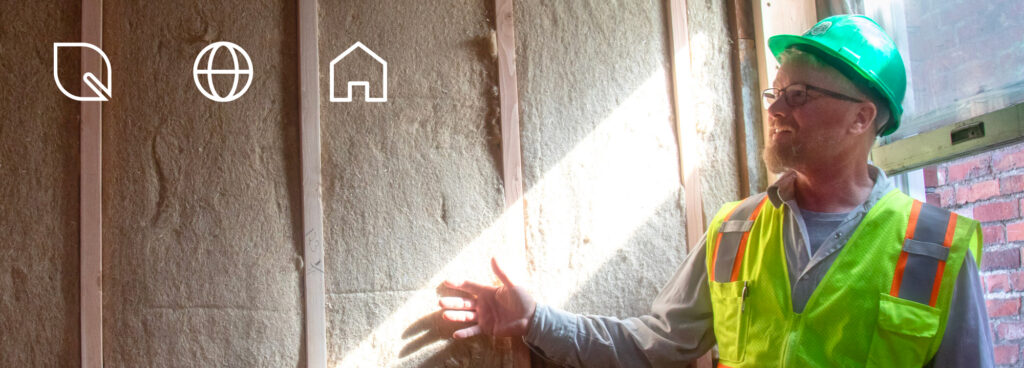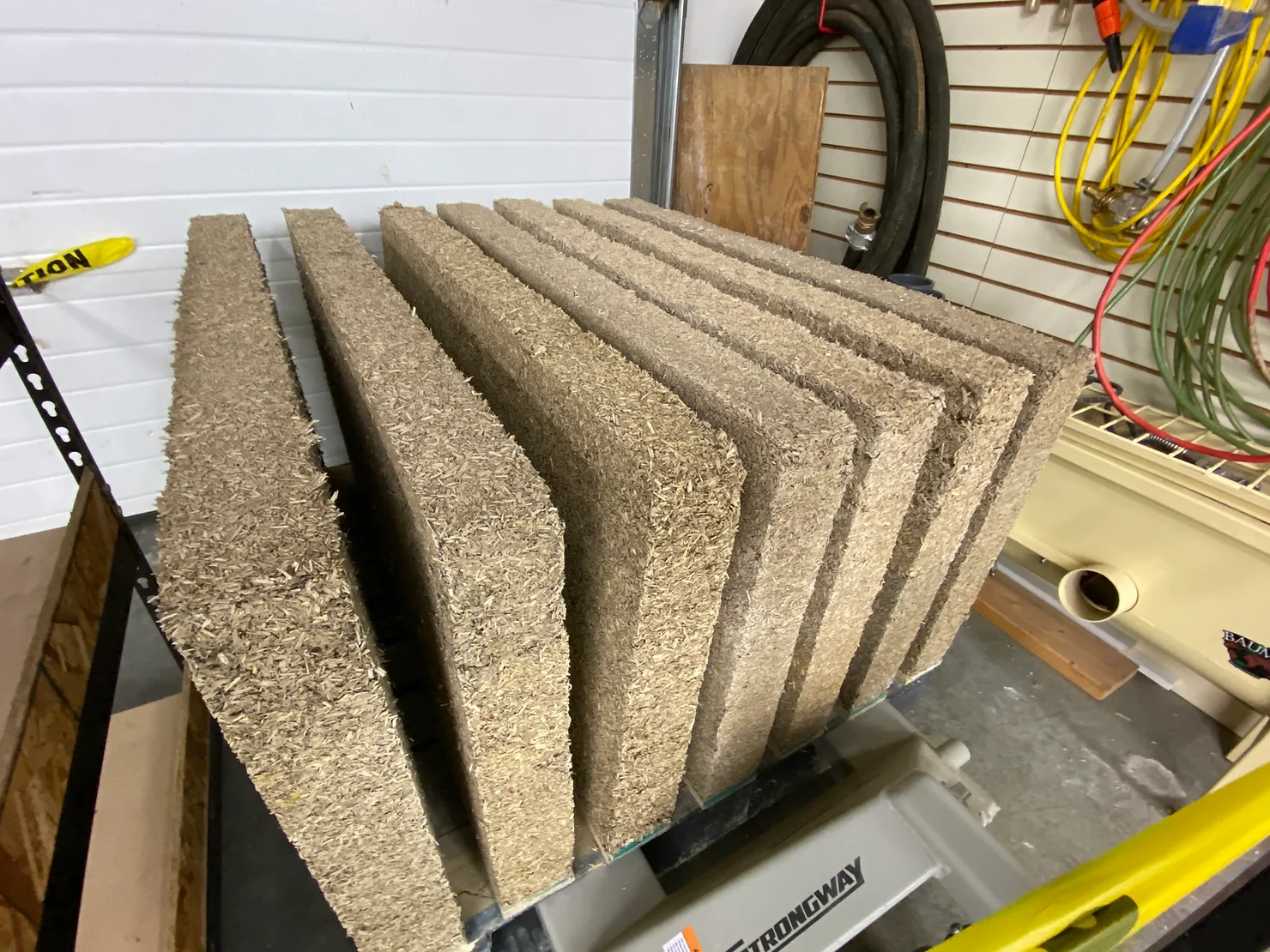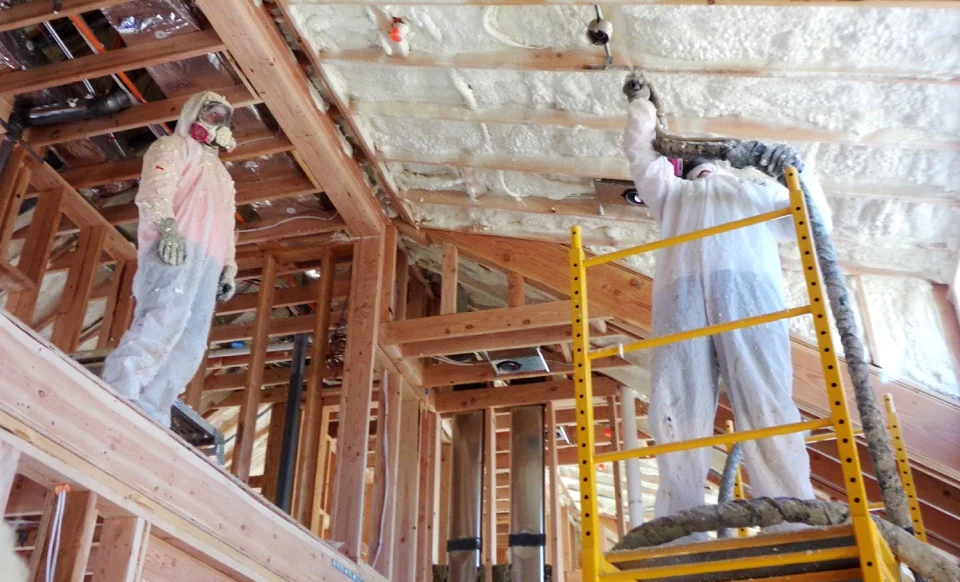The concept of non-toxic insulation has gained in popularity as people become more aware of the potential health and environmental impacts of traditional building materials. Insulation is a critical component of any home, playing a vital role in maintaining energy efficiency, comfort, and indoor air quality. However, not all insulation materials are created equal, and some can introduce harmful chemicals and pollutants into your living space. Let’s dig in to what it means to have non-toxic insulation, why it matters, and the benefits it offers for both your health and the environment.
The Problem with Traditional Insulation Materials

Traditional insulation materials, such as fiberglass, spray foam, and certain types of rigid foam boards, have been widely used in construction for decades. While these materials are effective at insulating homes, they contain chemicals that can pose health risks. Some of the most common concerns include:
Volatile Organic Compounds (VOCs) – Many conventional insulation materials release VOCs, which are chemicals that easily become vapors or gasses. These compounds can include formaldehyde, benzene, and toluene, among others. VOCs can cause a range of health issues, from headaches and dizziness to more severe long-term effects such as respiratory problems and even cancer.
Flame Retardants – To meet fire safety standards, many insulation products are treated with flame retardant chemicals. While these chemicals can reduce the risk of fire, they can also be harmful to human health. Some flame retardants, such as polybrominated diphenyl ethers (PBDEs), have been linked to endocrine disruption, neurodevelopmental issues, and reproductive toxicity.
Microfibers and Particulates – Fiberglass insulation, one of the most common types of insulation, is made from tiny glass fibers. When disturbed, these fibers can become airborne and be inhaled, potentially causing irritation to the skin, eyes, and respiratory system. The fiberglass industry commissioned a study that concluded glass fibers are not harmful to the lungs. However, despite these findings, glass and mineral fiber remain irritants to the skin and lungs.
Environmental Impact – The production and disposal of traditional insulation materials can have significant environmental consequences. Many of these materials are derived from non-renewable resources, such as petroleum, and their manufacturing processes can contribute to greenhouse gas emissions and pollution. Additionally, some insulation materials are not biodegradable, leading to waste management challenges.
What Is Non-Toxic Insulation?

Non-toxic insulation refers to insulation materials that are free from harmful chemicals and pollutants. These materials are designed to provide the same benefits as traditional insulation—thermal efficiency, soundproofing, and moisture control—without compromising indoor air quality or the health of the occupants. Non-toxic insulation materials are typically made from natural, renewable, or recycled resources, and they are manufactured using processes that minimize environmental impact.
Common Types of Non-Toxic Insulation
There are several types of non-toxic insulation materials available on the market today, each with its unique properties and benefits. Some of the most popular options include:
Cellulose Insulation – Made from recycled paper products, such as newspapers and cardboard, cellulose insulation is treated with non-toxic fire retardants like boric acid. It is a fair option for reducing energy costs and improving soundproofing. Cellulose is also biodegradable, making it an environmentally friendly choice.
There are however a few potential downsides related to health, performance, and sustainability. If cellulose insulation becomes wet, it can absorb moisture more readily than other insulation types, potentially leading to mold growth, which poses health risks in indoor environments. In severe cases, that absorbed moisture can lead to structural damage to building components if it retains moisture over time. Finally, cellulose insulation can settle, especially if not installed properly, reducing its overall R-value (thermal resistance). This could create air gaps and reduce its effectiveness. The process of treating the paper with chemicals and preparing it for use as insulation consumes energy, potentially reducing the overall sustainability score compared to materials with lower processing needs.
Wool Insulation – Sheep’s wool is a natural, renewable resource that has been used for insulation for centuries. Not only is it effective at regulating temperature but also has the added benefit of absorbing and neutralizing harmful chemicals, such as formaldehyde, from the air. Wool is also naturally fire-resistant and biodegradable.
There are a few downsides to consider. Wool can attract dust mites, and without proper treatment, it may be more prone to pest infestations such as moths or other insects that consume wool. Wool is a good insulator but may not be as efficient as some synthetic alternatives like spray foam or fiberglass when it comes to R-value (thermal resistance) per inch. More wool may be required to achieve the same insulation level, potentially increasing the thickness and cost.
Though wool is renewable, large-scale sheep farming can have environmental impacts, such as land degradation, water use, and methane emissions from livestock. The environmental footprint of wool production may be higher than plant-based insulation alternatives like hemp or cellulose. Similarly to Cellulose, the process of cleaning and treating wool, especially removing lanolin and adding fire-retardant chemicals, can require significant energy and water use, affecting its overall sustainability profile. Additionally, wool is only available outside of the USA, so all wool insulation sold in the USA is imported from countries like New Zealand, contributing to carbon emissions.
Denim Insulation – Made from recycled cotton fibers, often sourced from discarded denim, this type of insulation is soft, easy to handle, and free from harmful chemicals. Cotton insulation is treated with non-toxic borates to enhance its fire resistance and prevent pest infestation. It is also an excellent sound absorber, making it ideal for reducing noise in homes.
Although denim insulation is marketed as a natural product, it typically requires chemical treatments for fire retardancy, mold resistance, and pest control. These additives can introduce potential off-gassing concerns, even if the insulation itself is considered non-toxic. Denim insulation tends to have a slightly lower R-value per inch compared to other insulation types. This means it may require more material or thicker walls to achieve the same thermal performance, which can be a limitation in space-constrained areas. Denim is also prone to absorbing moisture, so it may not be the most suitable material for very humid or wet environments.
The process to convert denim into insulation can still be energy-intensive. Additionally, it relies on a consistent supply of waste denim, which is dependent on the fashion industry’s output. Finally, if denim insulation is not produced locally, its transport from manufacturing centers can offset some of its environmental benefits, adding to its carbon footprint.
Non-toxic insulation that is healthy, performing, and sustainable?!

Hemp Insulation checks allllll the boxes! It is made from the fibers of the hemp plant, which is a fast-growing and renewable resource. Hemp requires very limited to no pesticides or fertilizers, and minimal water to cultivate. Hemp insulation is non-toxic, breathable, and resistant to mold and pests. There are no VOCs making it safer for indoor air quality. Hemp is hygroscopic, meaning it can absorb and release moisture without losing its insulating properties. This helps maintain balanced humidity levels indoors, which can contribute to a healthier environment by preventing excess moisture and mold formation. When considering performance benefits, Hemp insulation offers excellent thermal (and acoustic) performance, keeping buildings warm in winter and cool in summer. It has a comparable R-value to conventional insulators.
Hemp insulation is conclusively carbon negative meaning it sequesters more CO2 than it emits to produce. Hemp is a rapidly renewable crop, growing in just 3-4 months. It requires less water, no pesticides, and minimal fertilizers compared to other crops, making it highly sustainable. Furthermore, our hemp is grown regionally, reducing transportation-related carbon emissions and supporting regional farming economies. Hemp insulation can be produced without fire retardants and is still acceptable for residential construction. In some cases, Hemp Insulation is treated with fire retardants that are biobased and avoid the concerns of conventional fire retardants used in insulation.
These combined benefits make hemp insulation an excellent choice for environmentally conscious building projects that prioritize health and sustainability while maintaining high performance standards.
The Benefits
Choosing non-toxic hemp insulation for your home offers numerous benefits, both for your health and the environment. By using hemp insulation materials that are free from harmful chemicals, you can significantly reduce the levels of VOCs and other pollutants in your home. This can lead to better respiratory health, fewer allergic reactions, and a lower risk of long-term health issues.
By choosing non-toxic hemp insulation, you are making a more sustainable choice that helps protect the planet. Knowing that your home is insulated with materials that are safe for you and your family can provide peace of mind. You won’t have to worry about the long-term health effects of exposure to toxic chemicals, and you can enjoy a healthier living environment.
Making the Switch
If you’re considering a home renovation or building a new home, it’s worth exploring non-toxic hemp insulation. While our products may be more expensive upfront compared to traditional insulation, the long-term benefits—both in terms of health and energy savings—often outweigh the initial cost. Additionally, as demand for non-toxic building materials continues to grow, prices are likely to become more competitive.
Whether you’re looking to improve energy efficiency, reduce your environmental impact, or create a healthier living space, non-toxic hemp insulation is a smart and forward-thinking choice.
A Healthier Choice for Your Home – For People and Planet



